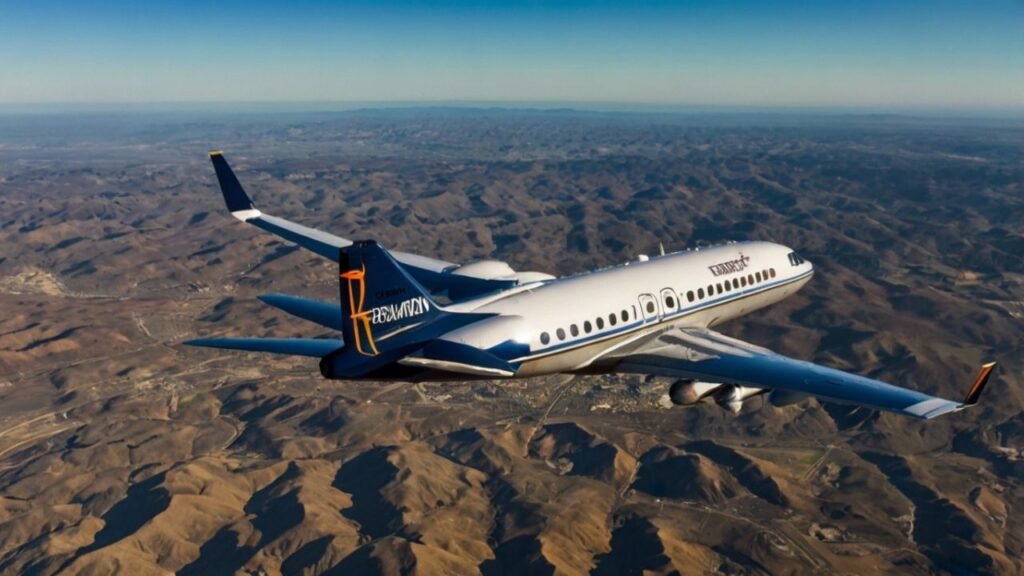Flight tracking has become an important tool for aviation fantastic, professionals, and travellers alike. It provides real-time information about the location, speed, and altitude of aircraft, making it easier to monitor flights for various purposes. Among the many aircraft tracked globally, the CFBWH stands out as an interesting subject. This article will explore the importance of flight tracking, around into the history and significance of the CFBWH aircraft, and explain how tracking technology enhances our understanding of aviation.
What is Flight Tracking?
Flight tracking is a process that involves monitoring an aircraft’s movements from takeoff to landing. This is done using various technologies, including radar, satellite, and Automatic Dependent Surveillance-Broadcast (ADS-B) systems. These technologies collect data on an aircraft’s position, speed, altitude, and other vital information, which is then made available to the public through various online platforms and apps.
Flight tracking serves several purposes. For air traffic controllers, it is crucial for maintaining safe airspace management and ensuring that aircraft are on the correct flight paths. For airlines and airports, tracking helps in managing schedules, coordinating ground operations, and minimizing delays. For the public, flight tracking offers a way to follow flights in real-time, whether it’s to keep an eye on a loved one’s journey or to learn more about aviation.
The CFBWH Aircraft: A Brief History
CFBWH is the registration number of a specific aircraft, and like all aircraft, it has its own unique history. Aircraft registration numbers are similar to license plates for cars; they are unique identifiers that are assigned to each aircraft. These numbers are crucial for identifying planes and keeping track of their movements, maintenance history, and ownership.
The “C-” prefix indicates that the aircraft is registered in Canada, as each country has its own designated prefix. The CFBWH aircraft has likely undergone several missions and flights, contributing to its story in aviation. The specific details of CFBWH, such as its type, manufacturer, and history, can be found through various aviation databases and records.
Importance of Tracking Aircraft Like CFBWH
Tracking an aircraft like CFBWH can provide valuable insights into the operations and usage of the aircraft. For aviation fantastic, following the flight paths of such aircraft can be an interesting hobby. They can observe where the aircraft has been, the types of missions it might be involved in, and how often it flies.
For professionals in the aviation industry, tracking aircraft is needed for ensuring safety and efficiency. Maintenance crews can use flight history data to schedule regular inspections and repairs, ensuring that the aircraft remains in top condition. Airlines and private operators can analyse flight data to optimize routes, reduce fuel using up, and improve overall performance.

How Flight Tracking Works
Flight tracking relies on several key technologies to provide accurate and up-to-date information:
- Radar Systems: Traditionally, radar has been the primary method for tracking aircraft. Ground-based radar stations send out radio waves that bounce off the aircraft, returning to the radar station with data about the aircraft’s position and altitude.
- ADS-B (Automatic Dependent Surveillance-Broadcast): This is a more modern and correct method of tracking. Aircraft equipped with ADS-B transmitters broadcast their GPS location, altitude, speed, and other data to ground stations and other aircraft. This information is then used to update flight tracking databases in real-time.
- Satellite Tracking: In areas where radar coverage is limited, such as over oceans or remote regions, satellites are used to track aircraft. Satellites can receive signals from aircraft and relay them back to ground stations, ensuring continuous tracking even in the most isolated locations.
- Flight Tracking Apps and Websites: Platforms like Flightradar24 and FlightAware use data from these various sources to provide real-time tracking information to the public. Users can enter the registration number of an aircraft, like CFBWH, to see its current location, flight history, and other relevant details.
Benefits of Flight Tracking
The ability to track flights like those of CFBWH offers several advantages:
- Safety: Real-time tracking helps ensure that aircraft are following their planned routes and maintaining safe distances from other planes. It also aids in emergency situations, allowing authorities to quickly locate and assist an aircraft in disturbance.
- Transparency: Flight tracking provides transparency for passengers and the public. It allows people to monitor flights, check for delays, and stay informed about travel plans.
- Data Analysis: Airlines and operators can use tracking data to analyse performance, optimize routes, and improve fuel efficiency. This can lead to cost savings and reduced environmental impact.
- Educational Value: For aviation fantastic and students, flight tracking is an educational tool that offers notice into the workings of the aviation industry. It allows them to learn more about different aircraft, flight patterns, and air traffic management.
Conclusion
CFBWH, like many other aircraft, is part of a vast and intricate network of global aviation. The ability to track its movements and understand its history offers valuable insights into the world of aviation. Whether for safety, education, or simply out of curiosity, flight tracking provides an interesting window into the sky above us. As technology continues to advance, the tools and methods for tracking aircraft will only become more wordplay, further enhancing our ability to monitor and understand the world of flight.







